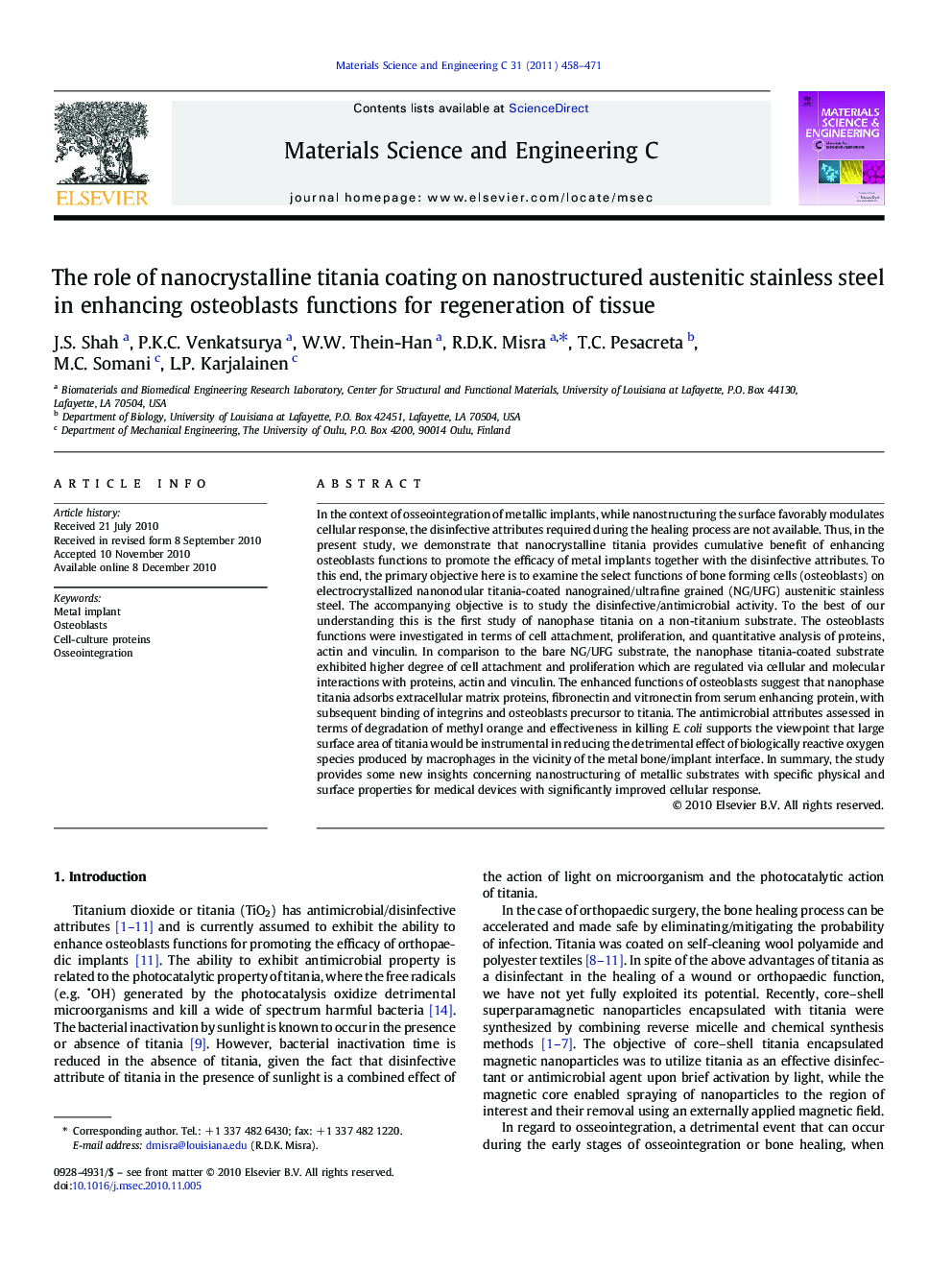| کد مقاله | کد نشریه | سال انتشار | مقاله انگلیسی | نسخه تمام متن |
|---|---|---|---|---|
| 10614805 | 987173 | 2011 | 14 صفحه PDF | دانلود رایگان |
عنوان انگلیسی مقاله ISI
The role of nanocrystalline titania coating on nanostructured austenitic stainless steel in enhancing osteoblasts functions for regeneration of tissue
دانلود مقاله + سفارش ترجمه
دانلود مقاله ISI انگلیسی
رایگان برای ایرانیان
کلمات کلیدی
موضوعات مرتبط
مهندسی و علوم پایه
مهندسی مواد
بیومتریال
پیش نمایش صفحه اول مقاله

چکیده انگلیسی
In the context of osseointegration of metallic implants, while nanostructuring the surface favorably modulates cellular response, the disinfective attributes required during the healing process are not available. Thus, in the present study, we demonstrate that nanocrystalline titania provides cumulative benefit of enhancing osteoblasts functions to promote the efficacy of metal implants together with the disinfective attributes. To this end, the primary objective here is to examine the select functions of bone forming cells (osteoblasts) on electrocrystallized nanonodular titania-coated nanograined/ultrafine grained (NG/UFG) austenitic stainless steel. The accompanying objective is to study the disinfective/antimicrobial activity. To the best of our understanding this is the first study of nanophase titania on a non-titanium substrate. The osteoblasts functions were investigated in terms of cell attachment, proliferation, and quantitative analysis of proteins, actin and vinculin. In comparison to the bare NG/UFG substrate, the nanophase titania-coated substrate exhibited higher degree of cell attachment and proliferation which are regulated via cellular and molecular interactions with proteins, actin and vinculin. The enhanced functions of osteoblasts suggest that nanophase titania adsorbs extracellular matrix proteins, fibronectin and vitronectin from serum enhancing protein, with subsequent binding of integrins and osteoblasts precursor to titania. The antimicrobial attributes assessed in terms of degradation of methyl orange and effectiveness in killing E. coli supports the viewpoint that large surface area of titania would be instrumental in reducing the detrimental effect of biologically reactive oxygen species produced by macrophages in the vicinity of the metal bone/implant interface. In summary, the study provides some new insights concerning nanostructuring of metallic substrates with specific physical and surface properties for medical devices with significantly improved cellular response.
ناشر
Database: Elsevier - ScienceDirect (ساینس دایرکت)
Journal: Materials Science and Engineering: C - Volume 31, Issue 2, 12 March 2011, Pages 458-471
Journal: Materials Science and Engineering: C - Volume 31, Issue 2, 12 March 2011, Pages 458-471
نویسندگان
J.S. Shah, P.K.C. Venkatsurya, W.W. Thein-Han, R.D.K. Misra, T.C. Pesacreta, M.C. Somani, L.P. Karjalainen,